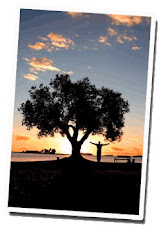Wednesday, April 23, 2008
Philippine Medicinal Plants 4
A tree of East Asian origin that is widely cultivated in tropical areas for its fruit, the mango, Mangifera indica, belongs to the cashew family, Anacardiaceae. The genus Mangifera contains about 60 species of jungle trees whose fruits are fibrous, acrid, and sometimes toxic, with a flavor that has been likened to turpentine.
Centuries of selection have produced varieties that are free of both fibers and offensive flavor.
They are rich in vitamins A, C, and D. Unripe they are used for mango chutney. When ripe, mangoes are soft and very juicy. An overripe mango tastes like turpentine.
Whoever eats this fruit frequently, also purifies the blood, prevents the accumulations of mucous in the throat and respiratory tract, counteracts all kinds of catarrhs, hoarseness, cough, diseases of the bronchial tubes, pain and debility of the stomach, intestinal laziness and fevers.
Tea made by boiling the leaves of the mango tree, prepared as a concoction, counteracts bronchitis and diseases of the stomach. Tea obtained from the seed of this fruit, prepared as concoction, combats intestinal worms and parasites.
With the use of honey, a very healthful syrup can be prepared from this fruit.
THERAPEUTIC PROPERTIES:
ALTERATIVE : A treatment that alters processes of nutrition.
Scientific name : Mangifera indica Anacardiaceae
The decoction of the leaves is antidiuretic. The oil of the seed is useful in chronic malarial fever. The root is also employed as an alterative.
English : Mango
Tagalog : Manga
Labels:
alterative,
catarrhs,
concoction,
decoction,
fibers,
Mangifera indica,
mango,
tea,
vitamins
Subscribe to:
Post Comments (Atom)








3 comments:
Kuya Bay gave your blogspot addy. Your site is very informative, and I am learning many things. I'll keep on visiting your blogspot.
Keep writing!
Is it true that we have the best mango varieties in Guimaras Island? Tell us something about it.
I had no idea the mango tree was part of the cashew family! I do not eat them myself, but my Mommie loves mangoes.
Post a Comment